Dawid Surmik's homepage

 Welcome to my website. I am Dawid Surmik, a vertebrate paleontologist, molecular taphonomist and freelance scientific consultant. Now I am finalizing my Ph.D. dissertation concerning microtaphonomy of reptile remains from the Middle Triassic of Silesia. I am also a trainer and consultant for SciVal in Poland. This is new Elsevier's tool for the evaluation of research performance. As a content coordinator, I took part in the preparation of several museum exhibitions, including the design and implementation of PaleoSafari Moab Giants in Moab, the USA - the world's first ichnological museum. My special scientific interests concerning Early Mesozoic marine and terrestrial tetrapod. I am author and co-author of dozens of scientific publications, including several in the Journal Citation Reports database
Welcome to my website. I am Dawid Surmik, a vertebrate paleontologist, molecular taphonomist and freelance scientific consultant. Now I am finalizing my Ph.D. dissertation concerning microtaphonomy of reptile remains from the Middle Triassic of Silesia. I am also a trainer and consultant for SciVal in Poland. This is new Elsevier's tool for the evaluation of research performance. As a content coordinator, I took part in the preparation of several museum exhibitions, including the design and implementation of PaleoSafari Moab Giants in Moab, the USA - the world's first ichnological museum. My special scientific interests concerning Early Mesozoic marine and terrestrial tetrapod. I am author and co-author of dozens of scientific publications, including several in the Journal Citation Reports database
I invite you to cooperation,
Featured publications
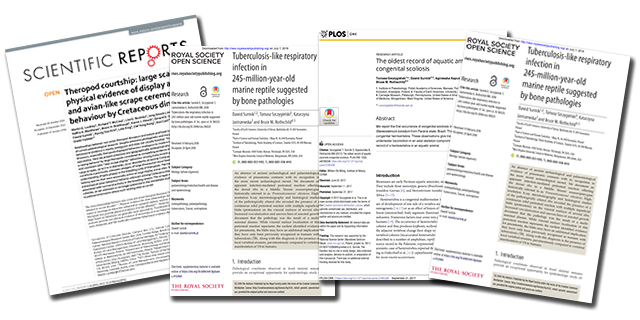
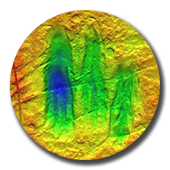
|
Theropod courtship: large scale physical evidence of display arenas and avian-like scrape ceremony behaviour by Cretaceous dinosaurs Lockley et al. Scientific Reports (2016) The large-scale areas covered by numerous bowl-shaped digging traces associated with "more classic" theropod tracks in Cretaceous rock in Colorado, the USA suggested ancient behavior similar to that observed in the so-called lekking behavior in modern-day birds during mating season. |
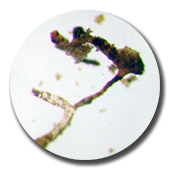
|
Spectroscopic studies on organic matter from Triassic reptile bones, Upper Silesia, Poland Surmik et al. PLoS One (2016) The fossilized blood vessels found in the bones of the Triassic marine reptiles reveal the oldest chemical remains of collagen, a protein building connective tissues in animals. The fine-scale techniques, e.g. high-resolution mass spectrometry confirmed the endogenous origin of the studied protein fragments. |
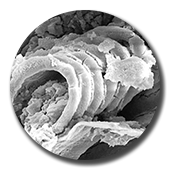
|
Unusual intraosseous fossilized soft tissues from the Middle Triassic Nothosaurus bone Surmik et al. Science of Nature (2017) The weird annuli-shaped structures found in Triassic marine reptile bone were preserved strengthened walls of fossilized blood vessels. They could play a role in preventing of decompression sickness development. |
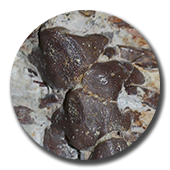
|
The oldest record of aquatic amniote congenital scoliosis Szczygielski et al. PLoS One (2017) A congenital spine malformation called hemivertebra was recognized in the articulated skeleton of Permian aquatic amniote. This case documents the persistence of homeobox defects before the Age of Reptiles. |
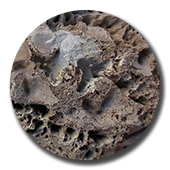
|
Two types of bone necrosis in the Middle Triassic Pistosaurus longaevus bones: the results of integrated studies Surmik et al. Royal Society Open Science (2017) The erosion of joints was identified on the surfaces of several thigh bones of Triassic reptiles from Germany and Poland. The pathomorphological, microstructural and chemical studies of these altered bones suggested the oldest record of infectious arthritis, the oldest know until today. |
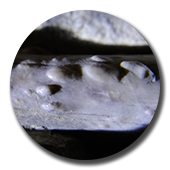
|
Tuberculosis-like respiratory infection in 245-million-year-old marine reptile suggested by bone pathologies Surmik et al. Royal Society Open Science (2018) The bleb-like protrusions found on the ribs of the Triassic marine reptile were the first evidence of tuberculosis-like respiratory infection, suggesting that similar disorders affect ancient biota at the dawn of Mesozoic. |
Research and methodology
 An in-depth deciphering of extinct tetrapod biology requires interdisciplinary and sophisticated methods.
An in-depth deciphering of extinct tetrapod biology requires interdisciplinary and sophisticated methods.
In my scientific activity, I try to combine traditional research methodology, based on unaided eye observations of preserved fossils with recent, novel methods, which allow for examination of the quality of the fossil record. This approach has resulted in several important discoveries, which extending our knowledge about the preservation of soft tissues in the fossilized skeletal remains and identification of various maladies affecting extinct vertebrates.
In cooperation with various laboratories I gained some experience with the most common spectroscopic techniques (Fourier-transform infrared spectroscopy, FTIR; Raman spectroscopy; X-ray photoelectron spectroscopy, XPS), high-resolution mass spectrometry (time-of-flight secondary ion mass spectrometry, ToF-SIMS) and microscopic techniques (optical microscopy; scanning electron microscopy, SEM; atomic force microscopy, AFM) as well as X-ray crystallography.
